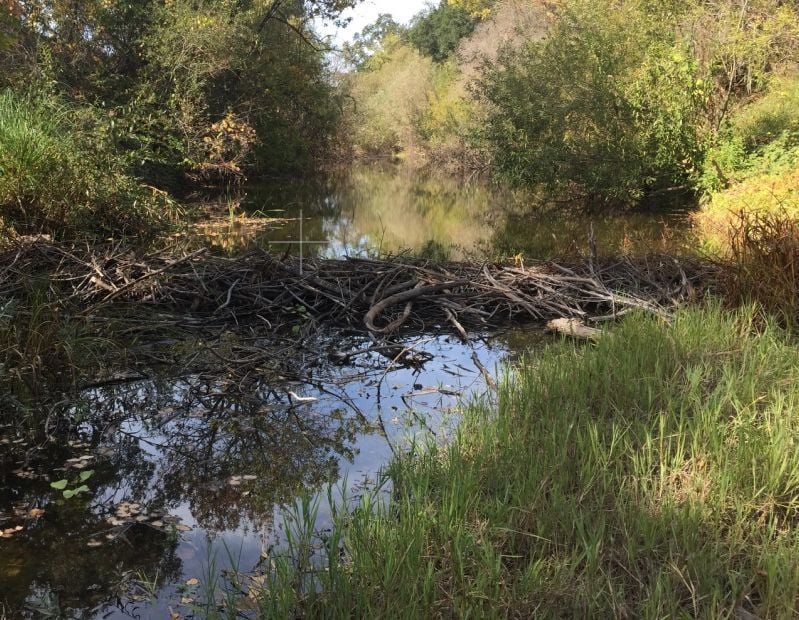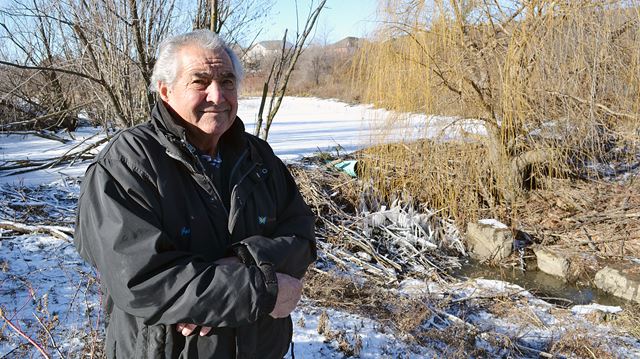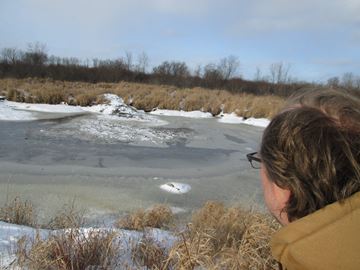Reader Pat Russel shared a well-crafted letter he sent to the news station about yesterday’s Reno report. I have his permission to share it with you, so enjoy.
This was not a very well written story. Someone should check the FEMA floodplain maps and check into whether the lady was advised prior to her land purchase whether the home is in the floodplain, let alone her extra insurance costs. Would also be worth investigating the planning and Zoning along the Steamboat Creek corridor from the slopes of Slide Mountain past the Reno airport where housing and industrial development has sprung up.
I grew up in Washoe Valley during the 50/60s and was/am very aware of the lack of planning by the Washoe County Board of Commissioners. There has been a serious disregard for environmental constraints. Many properties in Steamboat Valley rely on wells for their domestic needs.
Beaver contribute toward riparian enhancement, groundwater recharge and reduction of flashy runoff, but to be most effective, the ENTIRE riparian corridor should be allowed to flourish within the floodplain, and certainly not revetted or streambanks armoured to control erosion.
Of course, we all know the “ravages of nature” in the Sierras…conflagration fire events, high winds, mud slides, extreme precipitation and temperature, droughts and wet years (like fluctuations of Washoe Lake from dry to overflowing).
I encourage the TV station to check out the great work of beavers in Elko County where dry, delude, degraded and eroded ravines have been restored to much better riparian condition through allowance of multiple beaver dams, and ranchers have been working with BLM ecologists to control cattle grazing in these sensitive Northern Nevada stream corridors. Beavers are being recognized around the world (and especially in our dry West) for significantly contributing toward restoration of once biologically diverse riparian corridors and flourishing wildlife, thanks to beavers: Eco engineers and a keystone habitat species! How about putting a price on beaver Protection?
Depredation permitting is the real problem, because without beaver, no one public agency can afford to fund restoration work accomplished for free by beavers over a span of decades.
The county should be reexamining it’s floodplain policies and restricting any kind of “improvements” within the 500 year floodplain, including roads, utilities, parking lots, manicured park grounds, playground, paved trails, etc. Truckee River flooding the past 150 years should be enough evidence of poor choices (how the city reacts and tries to control the river’s character) and unusual costs to citizens, especially allowing property owners to alter natural conditions over the last 150 years. Over the next one hundred years, the public should attempt to recover those impacted lands and just let them be more natural. Yes, a river runs thru it (Reno).
One last note: We are fortunate that groups of citizens around the world are advocating for the beaver and it’s many good works. One excellent example is in the Bay Area out of Martinez, next door to the home of John Muir. Check this website: martinezbeavers.org/wordpress Many thanks for the efforts of Heidi Perryman and her friends.
You will also find some great volunteers at the Crystal Bay side of the lake (Tahoe), along with volunteers near Camp Richardson at the south shore.
By the way, beavers have ALWAYS been native to the Sierras….proven fact. Some of the wildlife managers are uninformed.
Patrick P. Russell
Clearly Pat is a former Nevada resident who remembered a few things about the old stomping grounds. He lives in Oregon now. Thanks Pat for this wonderful letter and for letting us share it here. I really think we should make it our new year’s resolution to write a few of these on beaver issues every so often. It might not change policy but it’s really good for people to read them and start thinking that there are other ways.
Here’s an almost clever author (John DeGroot) who is just starting to do so.
Toothy rodent can be a curse to the landowner
 The animal that adorns the face of our nickel is both a friend and foe of Ontarians. Back in grade school, we learned all about the admirable beaver. We learned that beavers spent most of their time in the water, protected from predators. Beavers have heavy tails that act as giant fly swatters, but mostly serve as anchors when standing on their hind legs. And we learned that beavers built dams, not so they could live in the dam, but to create deep ponds so they could survive in water under thick ice.
The animal that adorns the face of our nickel is both a friend and foe of Ontarians. Back in grade school, we learned all about the admirable beaver. We learned that beavers spent most of their time in the water, protected from predators. Beavers have heavy tails that act as giant fly swatters, but mostly serve as anchors when standing on their hind legs. And we learned that beavers built dams, not so they could live in the dam, but to create deep ponds so they could survive in water under thick ice.
In the wild beavers carry on their happy lives without much harm or blessing to the environment. They busy themselves chopping down small trees for a source of food, and chop down large trees to build dams to add depth to ponds.
But ask any farmer how they like beavers and you might get a harrowing story. Because beavers cause water to rise in ditches, streams and ponds, drainage tiles can be rendered useless. Fields can be flooded and even roadways can be washed out. Beavers will eat small limbs and landscape trees, favouring aspen, poplars, birch and maples. Beavers will also eat crops such as corn and beans, along with small shrubs, aquatic plants and fruit trees.
Beavers are stubborn creatures that won’t give up easily. Destroying their dam is futile because they rebuild quickly, sometimes overnight. Trapping and relocating beavers is also futile because they will invariably return to their chomping grounds or set up camp further upstream.
A clever farmer once told me he tricked the beavers by installing an overflow drain pipe that drained water elsewhere as soon as water rose to a certain height. The beavers eventually gave up and built a dam beyond his property.
Homeowners looking to protect their trees from beaver damage should wrap the bottom portion of their trees with steel mesh or hardware cloth. To protect a group of trees, install a mesh fence around the group, making sure the bottom of the fence is buried in soil and pegged often to prevent the beaver from crawling underneath.
Beavers in the wild do little harm or blessing to the environment? I mean besides saving water, augmenting salmonids, increasing wetlands, enriching moose diet, restoring bird diversity, improving frog habitat, and filtering toxins. Little blessing other than that.
Sheesh.





 big, big problem here,” said Vommaro, one of several residents at odds with the City of Brampton on what to do with these unwanted neighbours.
big, big problem here,” said Vommaro, one of several residents at odds with the City of Brampton on what to do with these unwanted neighbours.






































